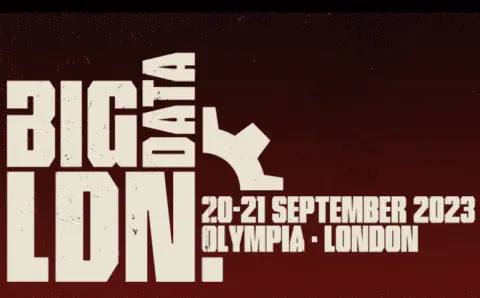In our recent virtual roundtable on data governance in housing, we were joined by Barry McNulty, independent data consultant and previously Director of Data at The Hyde Group.
The two-hour roundtable, which was attended by senior data professionals from several housing associations including Beyond Housing, Home Group, RHP, Riverside and Yorkshire Housing explored several different themes including data governance, management, stewardship and culture.
Data Governance or Data Management?
First up was the importance of clarifying whether you are looking at data governance or data management and ensuring you have a data strategy that identifies what the main challenges are for the organisation. Is there a failure in a data collection process where the quality of data is at fault or is it the lack of governance overall that is exacerbating the problem?
It was agreed that creating a briefing paper aimed at the senior leadership team, which summarises the current situation with data management, and that highlights the data governance processes in place across all aspects of data management is crucial. And this document needs to have clarity.
Overall, data management is the all-encompassing term that should be used organisation-wide that references data; data governance is about the controls that you apply across those areas. Data governance is often about policy and the approach that you take to manage areas including the approach to data security, metadata management and the organisation’s approach to architecture.
Ask questions
The consensus with the data professionals at the roundtable was to be open minded and ask questions. What do you know? What don’t you know? What is your baseline information? What are you doing around it? What is your level of data maturity? For you to have governance, you need to have people who are accountable, so who is in your data team on a data project? On a data project, there are several different reference points – even to just describe the lifecycle of data quality that you have. How accurate is the data? Is there consistency in the data information and how it is collected? Ensure you have a framework that includes elements of both data governance and data management but that asks questions across the organisation to ensure there aren’t untouched silos of information not being used or contra to that, large amounts of bad, inconsistent data.
Get the Exec fired up!
Bring in the senior leadership team and ask them to describe what challenges the organisation is facing generally and what specific challenges there are around data management. Often, there is a mind shift that needs to occur where the conversation changes from ‘we’ve got a data quality problem’ to ‘we’ve got problems because we don’t know the quality of our data and when we do know this, we will have several challenges to face.’
It’s about choosing the right language for the audience. Talking to a CEO about data architecture can be very limiting until you turn it into something that they do care about – then it becomes a very interesting conversation indeed. If you can turn the data challenges into a conversation about how an organisation can solve some of its business problems, using a data framework, then you are in a better place not just to solve that problem, but to start to embed and implement some of these standards into the organisation while getting buy-in from the exec.
A framework can help by setting out those basic foundations to begin with as well as giving you good support for making your business case around investment. One of the key documents is your data strategy, which can be a very simple document, but that clearly articulates where you are going using a basic roadmap, broken into manageable bite-sized pieces. If yours is an organisation that’s working in a truly agile project format, then the data work becomes even easier because you can start to break it down into sprints using the scrum ceremonies that you already have running. If you’re not working in an agile format, you can still break the project down into bitesize pieces and deliver it in a waterfall style.
Outline a specific business problem
To have the most success – whether that’s compliance, building safety or any other issue – focus on the problem that you’re trying to solve. Then check your roadmap. For data mature organisations, some data activities will be able to be run in parallel because there will be a good understanding of policy and there may be compliance procedures in place already. In other cases, where you are starting out, your project might be basic to begin with because you won’t be doing full master data management. No matter which, agree who will be accountable and to what level. It might be that the direction of travel in your organisation is to review your data programmes every year or two years – and depending on findings, put a business case together for something like an MDM tool as projects get more mature and complex.
Culture and Change
To secure resources, you must understand the business culture to ensure there is business readiness. For a project to be a success, it involves organisational change – and that is not easy. One of the key issues is data literacy and the different levels of understanding across an organisation. Choose a language that your audiences relate to and that will apply to all areas of focus – financial, customers and products.
There is a delicate balance between focusing on a financial win or financial benefit and what’s important for customers – which may seem like a cost but might turn out to be an investment. Build a business case or use case that looks at the customer, efficiencies and compliance. Refer to your framework and be broader with your data project aims.
Stewardship – who will control the project?
The role of the data steward doesn’t have to be a full-time role and it’s worth noting that getting people to take ownership of data projects can be challenging. Identify the people who are ultimately accountable and make them responsible for naming their own stewards. It will generally be the people that they trust in their own operational area to enact some of those responsibilities. If you are not sure if this will work, define a small use case project so you can quickly assess and review the processes and people in place. This enables you to see what will work and what can be built upon. Plus, if you can quickly demonstrate the value to the organisation, you will get more buy-in from the SLT and other departments.
You will need someone who is ultimately accountable for all aspects of data management, ideally in a senior leadership role in the organisation and that person will need to own the data strategy. But there are some real challenges with this, for example, let’s say you have a BI team and a data architect, but they work out of different areas of the business. For a project to be successful, you need to have a team of people with specific skillsets working together on a common goal. Depending on the size of the organisation and the level of data maturity of the project, your data architect and your data engineers or data warehouse developers need to be able to work closely together using consistent tools and technologies.
If the data team isn’t closely aligned with the technology team, you need to build a centralised team of experts that might contain roles like a data scientist or senior data analyst. These are key roles in providing good stories when it comes to dashboards and visualisations – vital to get buy-in from those in the organisation who aren’t ‘data’ people.
Red Olive has extensive experience of working with organisations of different data maturities to get more value from their data – from data quality to predictive analytics. Email us at [email protected] to arrange a call to see how we can help you.



